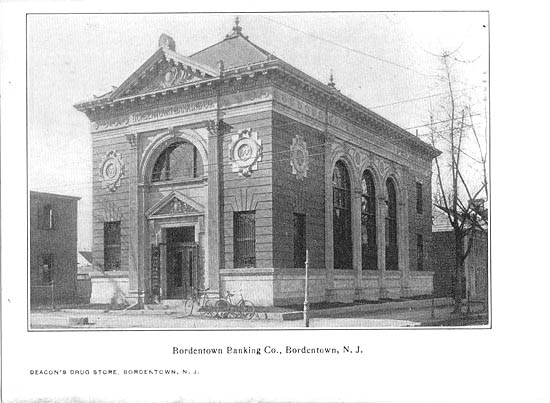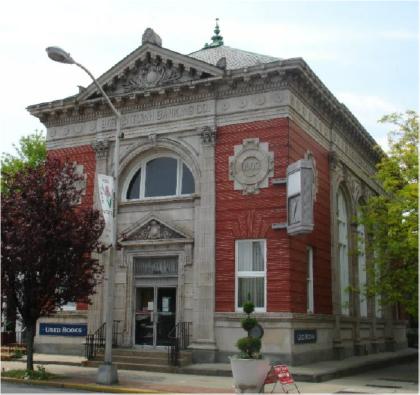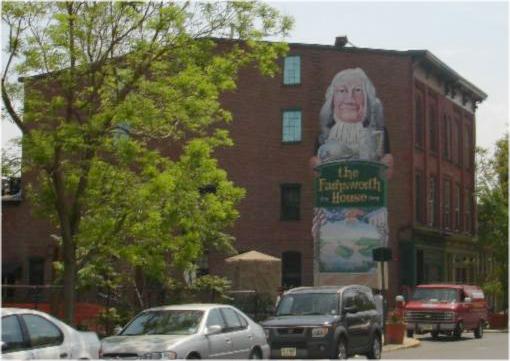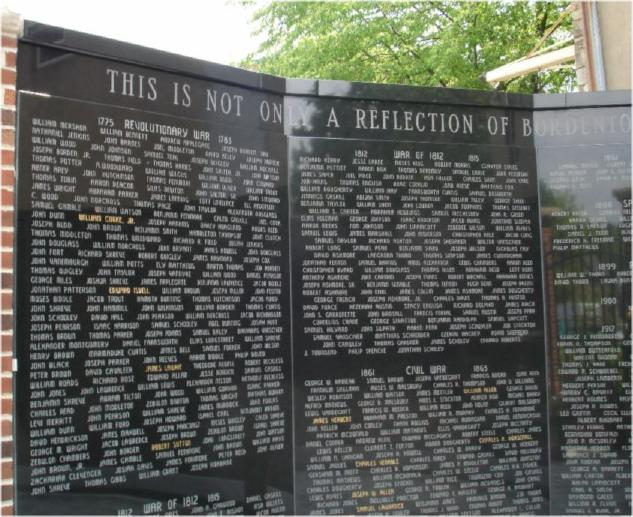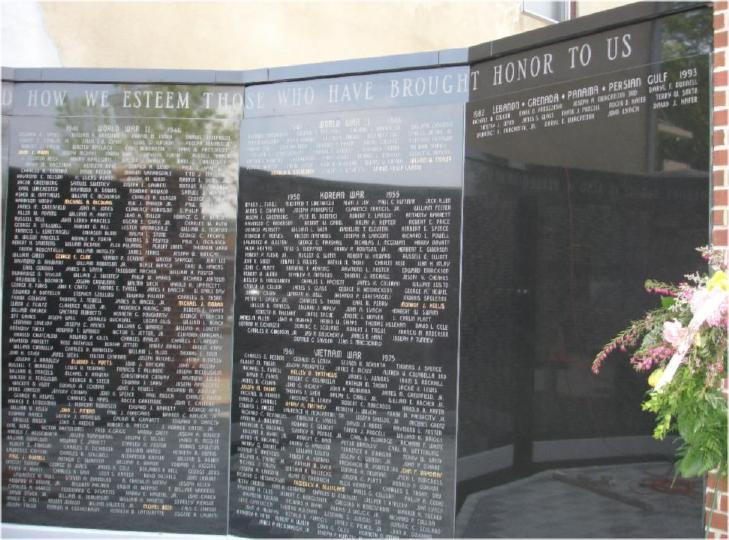Bordentown City
Bordentown is an extremely
charming little river town on the Delaware.
It's six miles south of Trenton,
24 miles south of Lambertville, and 19 miles from Dan's house.
It was established in 1682
by Quakers and has a long and glorious
history.
Today it has a population
of about 4,000.
Most of the homes in the city
date from the Civil War era, 1850-1870.
There are some earlier specimens
still standing, including a few from the 1700s.
Building was essentially halted
130 years ago when the railroads
killed the D
& R Canal because they didn't want the competition.
So it's frozen in time architecturally,
and it's just adorable.
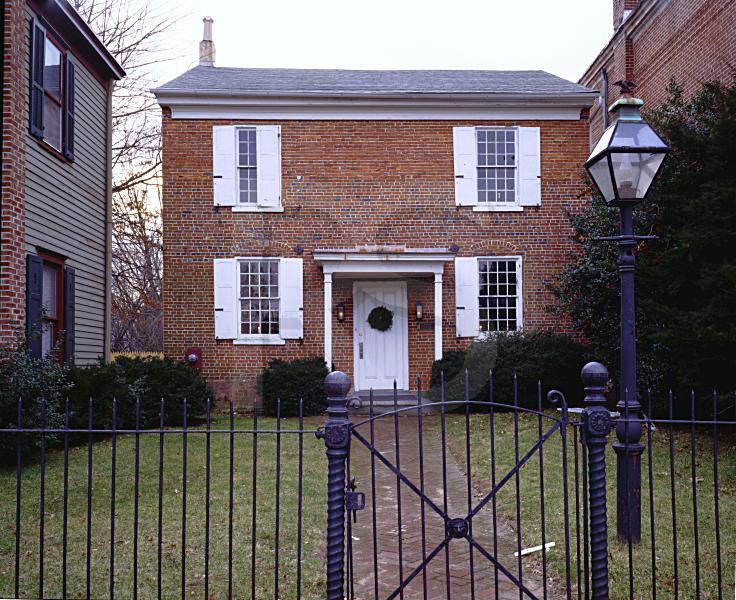
The original Bordentown Friends
Meeting House
on the main street, Farnsworth
Avenue.
This was Bordentown's first
house of worship,
built in 1740 by the town's
original Quaker
settlers on land deeded from
Joseph Borden.
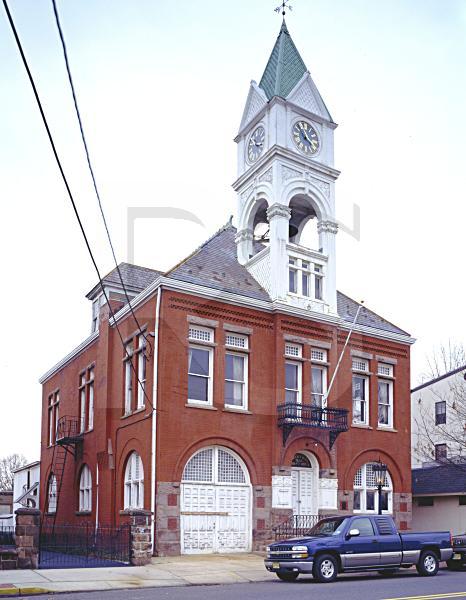
The Old City Hall, now home
to the Bordentown Historical Society.
Queen Anne clock tower with
Seth
Thomas clock.
Pick-up truck not included.
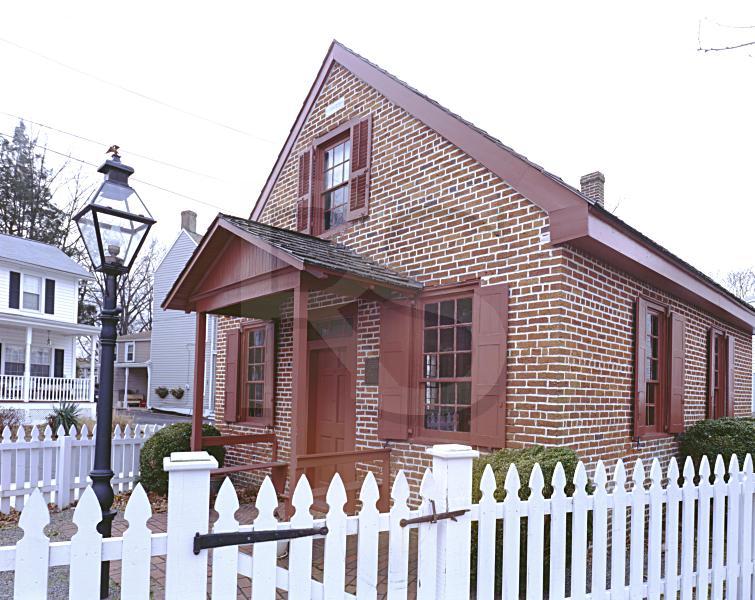
Clara
Barton's original public schoolhouse, 1852.
This tiny building was the
first free public school in the U.S.
Hired to teach at the school
that, like all the schools of the day, required students'
parents to subscribe, Barton
was disturbed by the many kids she saw hanging
around whose parents couldn't
afford to pay. She offered to teach without
salary if tuition were waived
for all. Attendance increased from six to six hundred.
She later resigned when the
local officials chose a male principal over her.
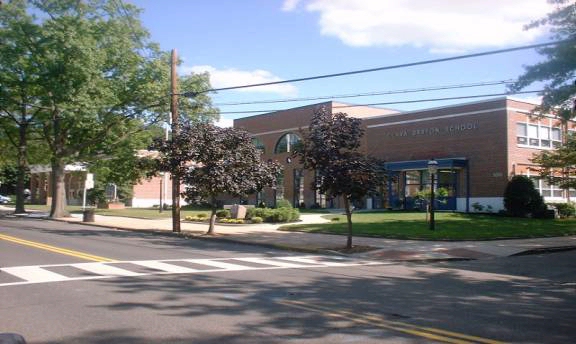
This is the Clara Barton (Elementary)
School today, right down the street from the original building.
Built in 1954, it is one of
the very few modern structures in town.
Bordentown Facades
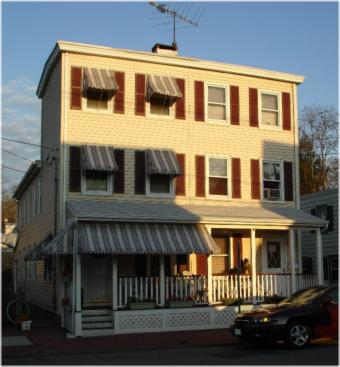
|

|
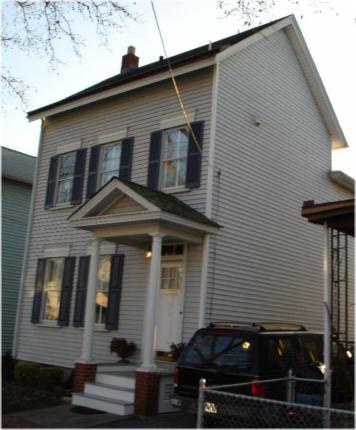
|
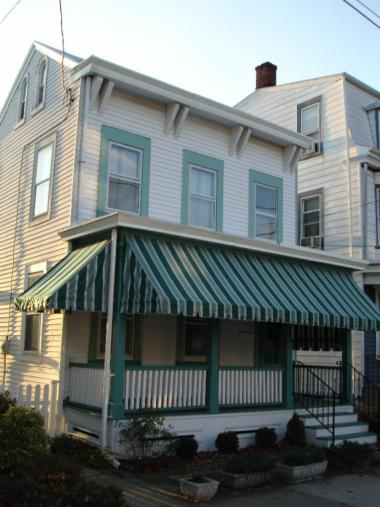
|
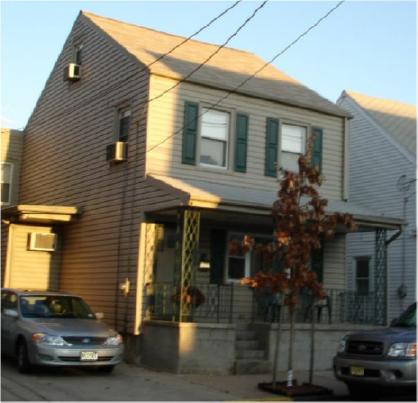
|
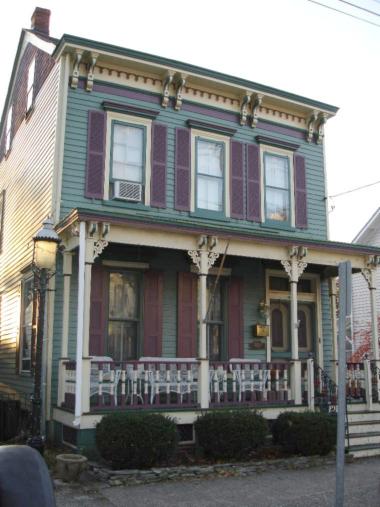
|
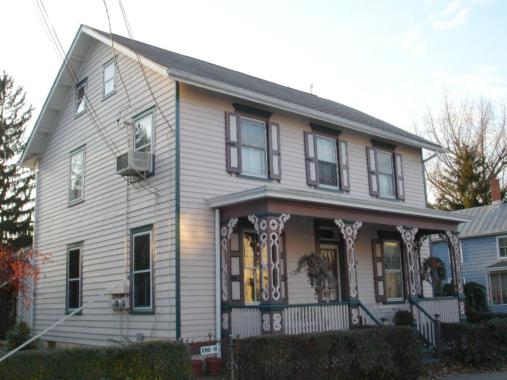
|
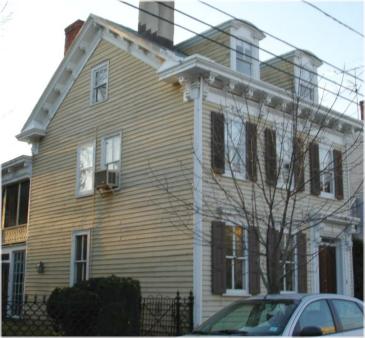
|
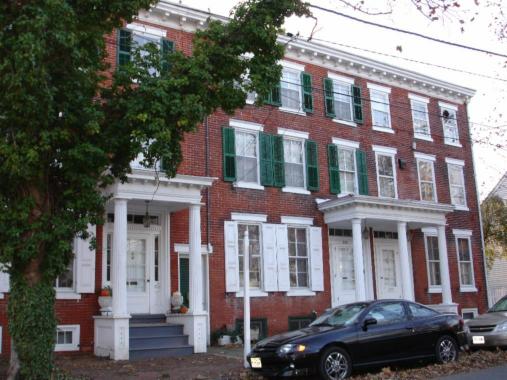
|
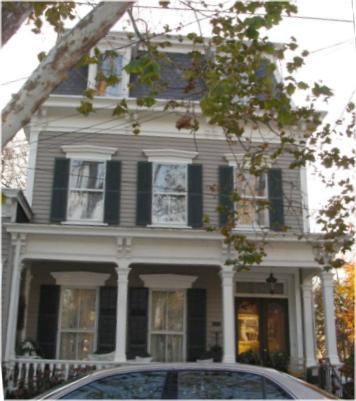
|
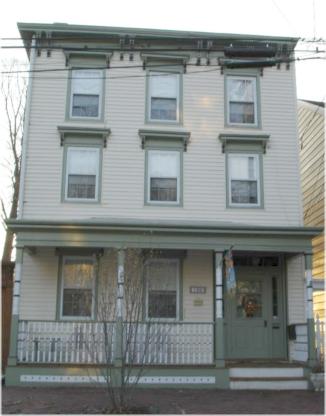
|
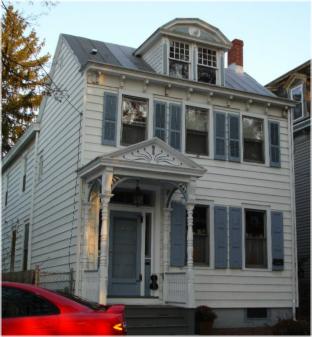
|
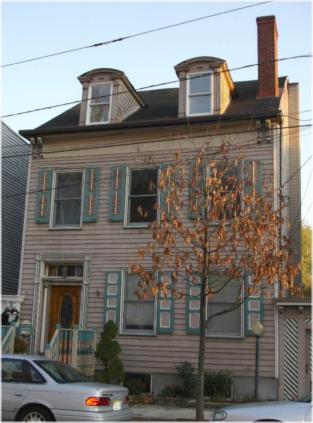
|
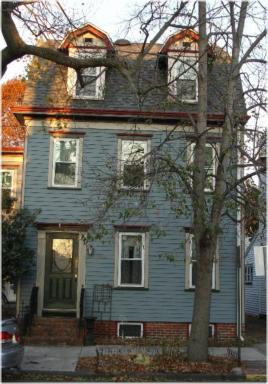
|
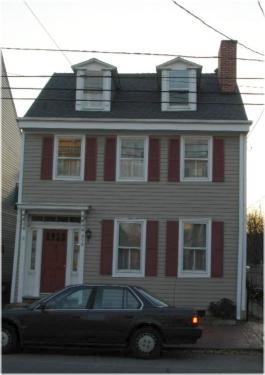
|
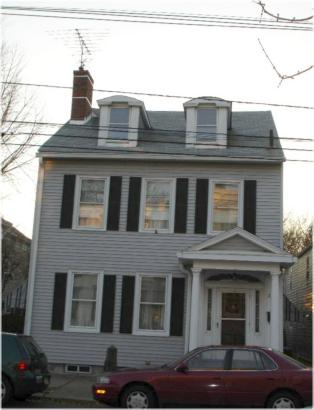
|
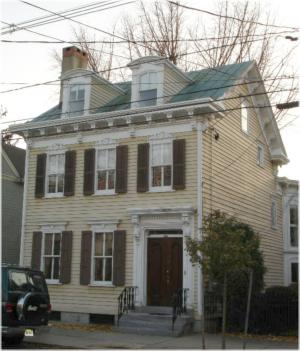
|
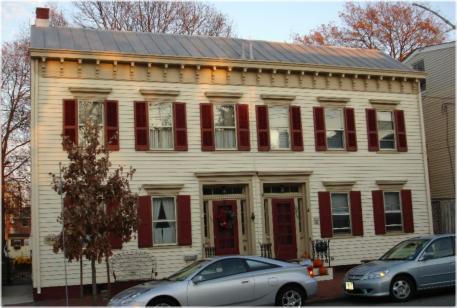
|
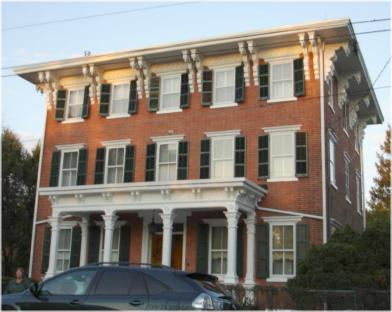
|
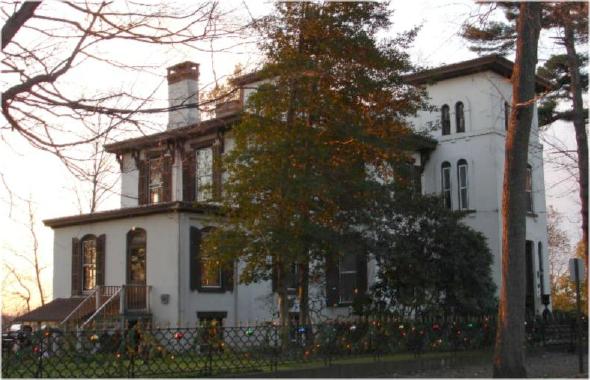
|
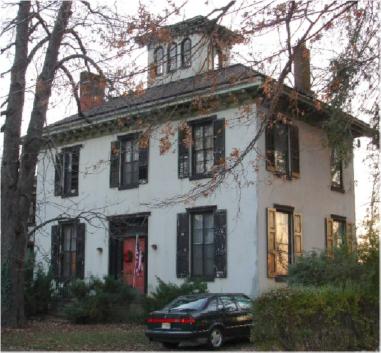
|
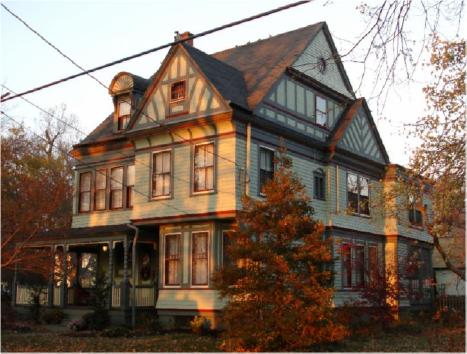
|
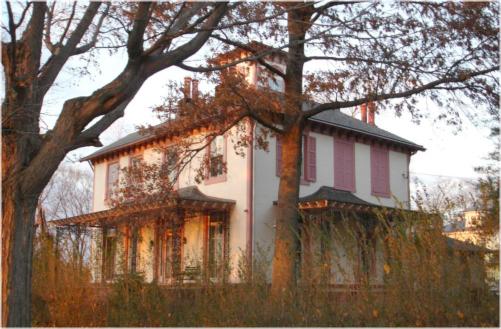
|
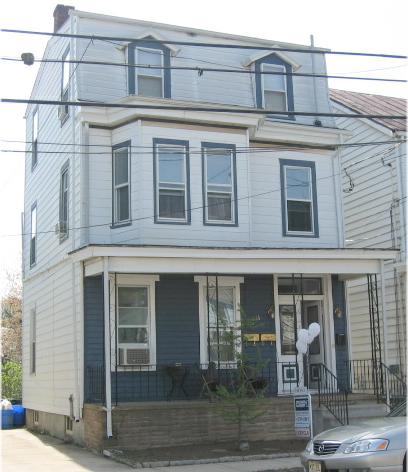
This is the house we are buying,
on Prince Street.
It was built in 1870.
For more pix of the house
and street, click
here.
|
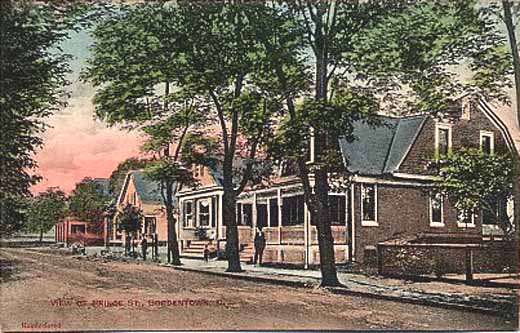
Here's what Prince Street
looked like some time ago...
Built in 1850, this formidable
building on the main street (Farnsworth) was the Bordentown Bank.
It'is now a used bookstore.
At right, the building today.
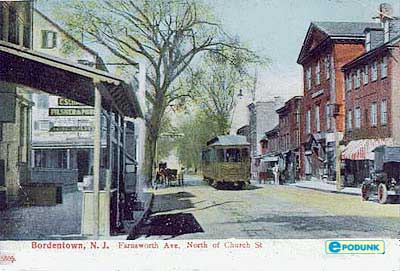
Farnsworth when the city had
trolley cars, which was from 1913 to 1932
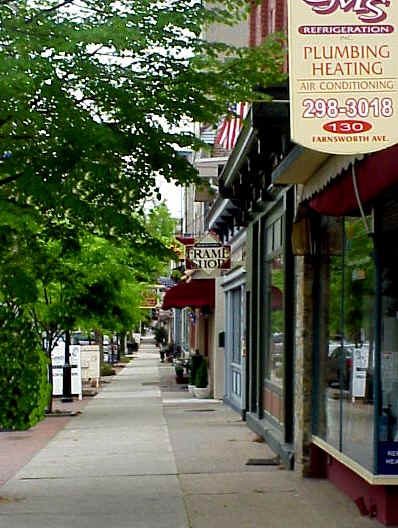
Farnsworth Avenue, aka Main
Street, today
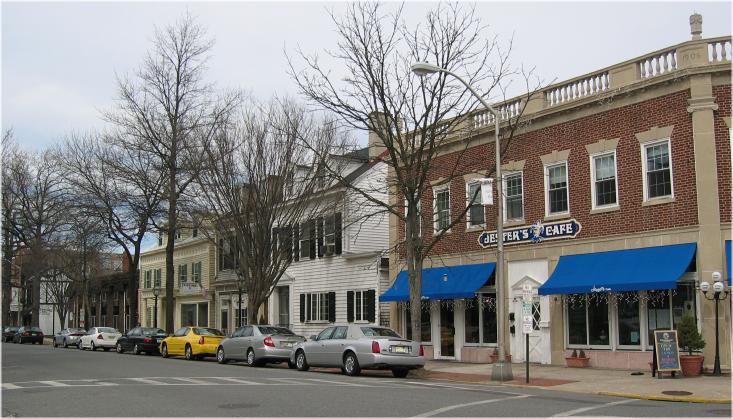
Another view of Farnsworth,
the main commercial street.
Liese hopes to work as a waitress
as Jester's, just two blocks from our house!
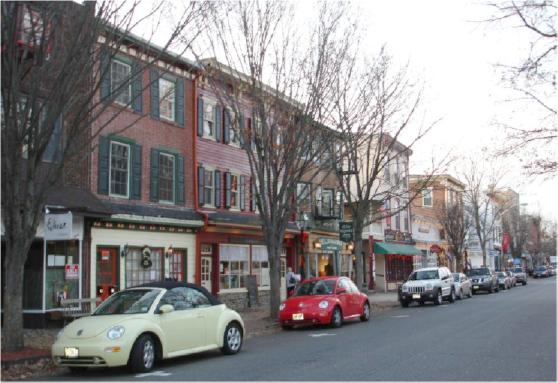
Farnsworth Avenue
(Mur, the double Beetles are
for you!)
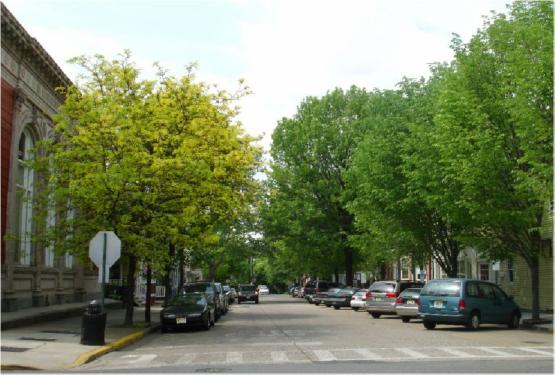
Here's Farnsworth in the bloom
of springtime!
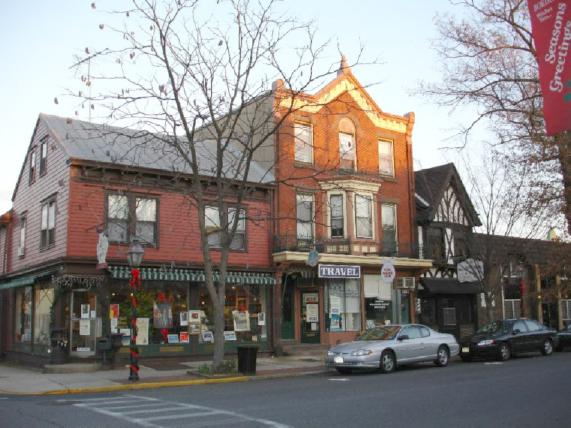
Farnsworth shops...actually
useful things like a great bakery,
a combination pharmacy/liquor
store (now THERE'S an idea!),
and doctor's offices are nestled
among the antique stores, art galleries,
antiquarian bookstores, cafés
and restaurants.
The Farnsworth House is
the city's oldest restaurant...
that's Quaker Joseph Farnsworth
himself on the side of the building...
he was the first European
to build a house here in 1682.
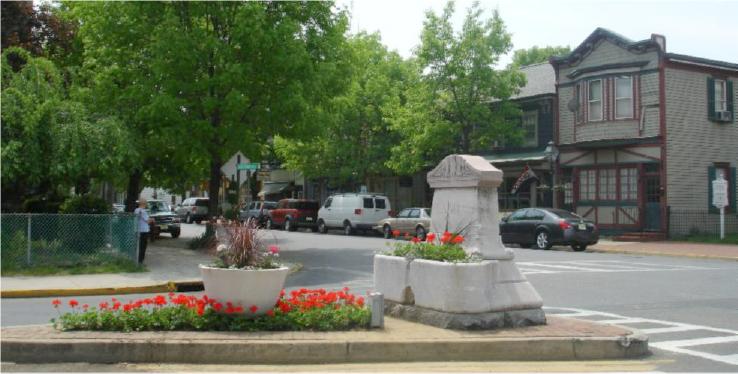
Crosswicks Street at Farnsworth.
WWI memorial in the middle
of the street.
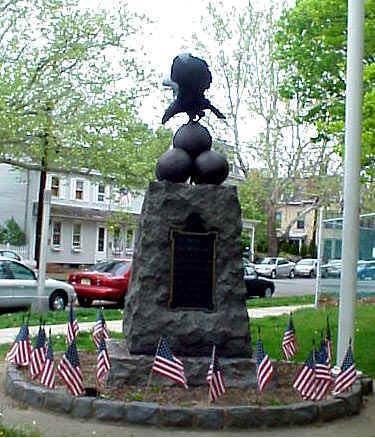
Civil War memorial near the
Post Office.
Bordentown's war dead
in marble, from the Revolution through Iraq...
how unfortunate that they
leave room for more...
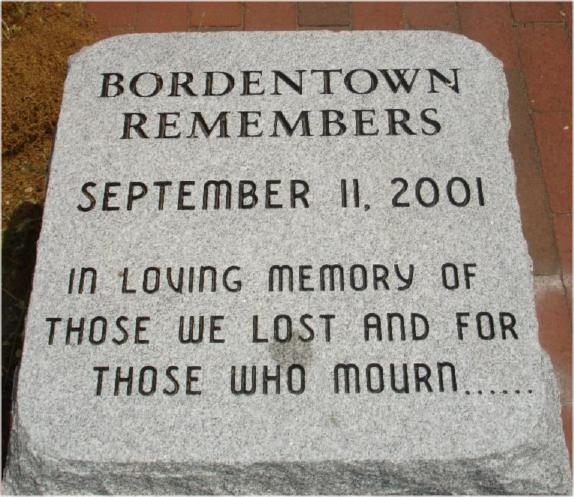
and then there's the 9/11
memorial...
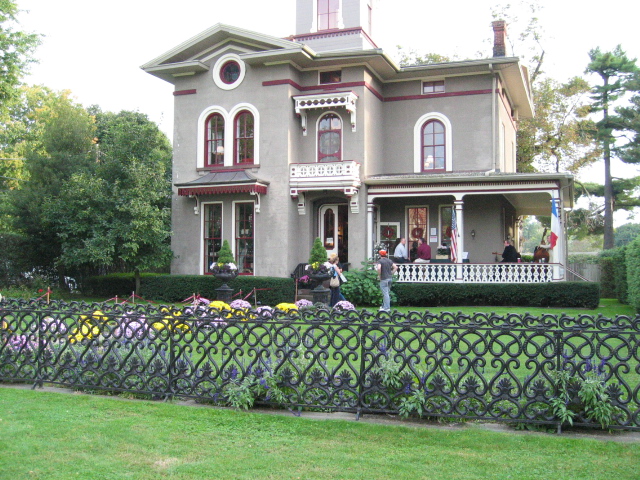
One of the city's grandest
houses, on the river bluff,
completely restored in the
Italianate style. Wow.
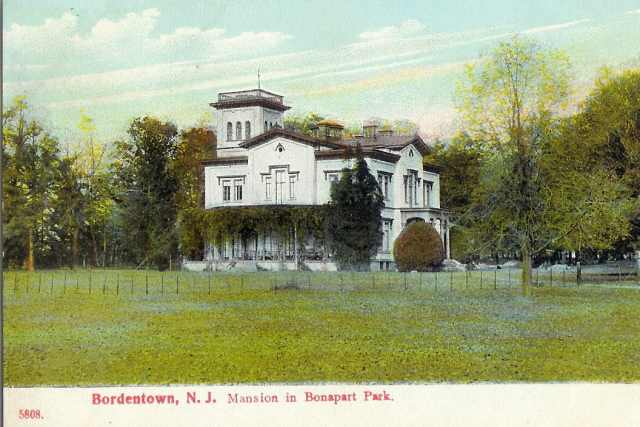
Napoleon's elder brother Joseph
lived
here from 1816 to 1847
after he was exiled from Spain,
where he had been installed King by his brother.
His estate was called Point
Breeze, and it was high on the bluff of course.
A 1983 fire destroyed the
whole place, except for the tunnel he built
down to the river to afford
himself an escape if his European enemies came to get him...
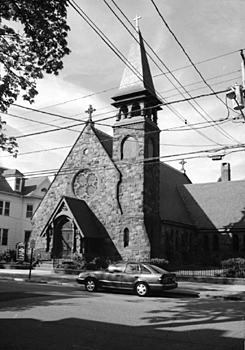
Christ Church, Episcopal,
1879
|
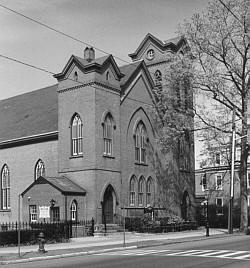
Presbyterian, 1870
|
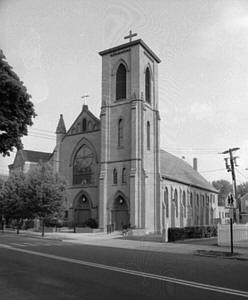
St. Mary's Catholic, 1870
|
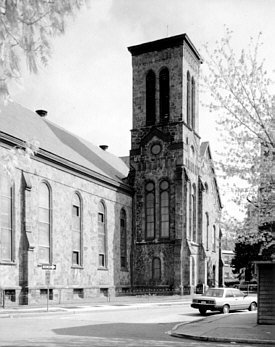
Methodist, 1896
|
Just some of the small
city's many architecturally interesting churches.
St. Mary's has been running
a K-8 school since 1870.
Jews live in Bordentown as
well; from 1874 to 1877, Bordentown had a Jewish tailor for mayor.
The Reconstructionist synagogue
dates from 1917. WTH is Reconstrucionist
Judaism, you ask?
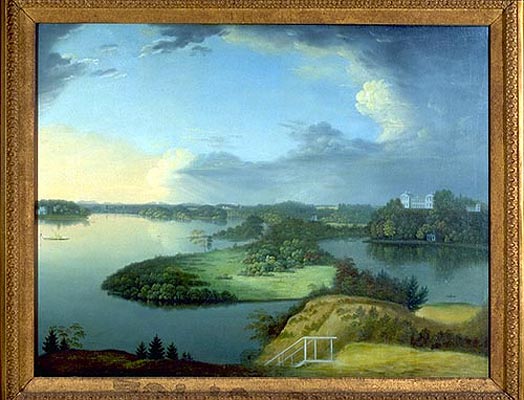
Here's a painting of Bordentown
from a long long time ago...
but you still get some of
this feel today, with the creek, the river, and the city on the bluff.
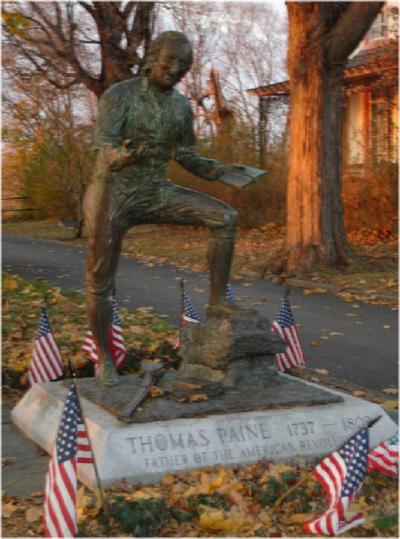
The town's most famous resident
is Thomas Paine, the man
who inspired the American Revolution
with Common Sense and
The
American Crisis, pamphlets purchased by a greater percentage
of the population than currently
watch the Super Bowl.
So why don't we hear about
Paine's ideas as often as those of Jefferson and Madison?
Because after the Revolution,
he published The Age of Reason, in which he argued the Bible
is full of inaccuracies and
contradictions and religious belief is not compatible
with reason. And you know
how God-bashing goes over in this country...
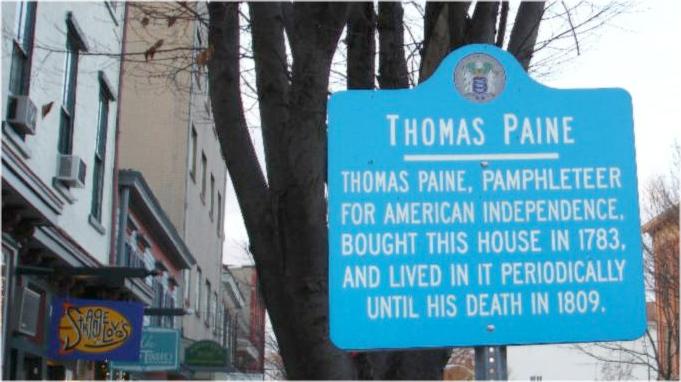
Publication of The Age
of Reason lost Paine nearly all his friends and
undid the good reputation
he enjoyed from his revolutionary writings.
He died bankrupt and alone,
in Greenwich Village.
His house in Bordentown, the
only home he ever bought,
where he was visited by the
likes of Benjamin Franklin, is now a dentist's office.

I had rather see my horse
Button in his own stable,
or eating the grass of
Bordentown,
than see all the pomp and
show of Europe.
-Thomas Paine, letter from
Europe, 1789
Also recommended: Thomas Edison's
1925 essay, The
Philosophy of Paine
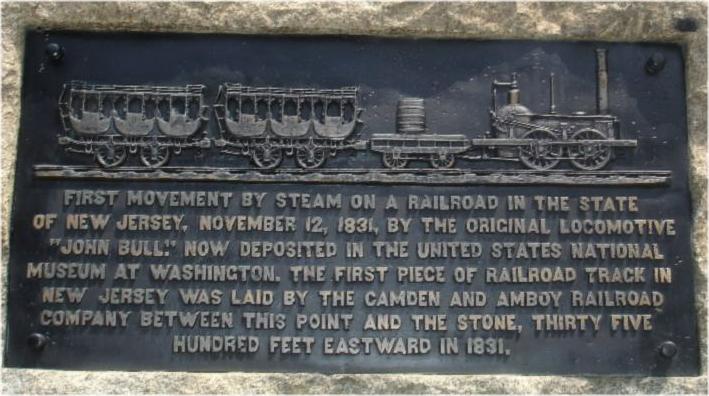
Site of the first piece of
railroad track in New Jersey, right smack in Bordentown City


the original tracks are now
abandoned but they still run right through the city
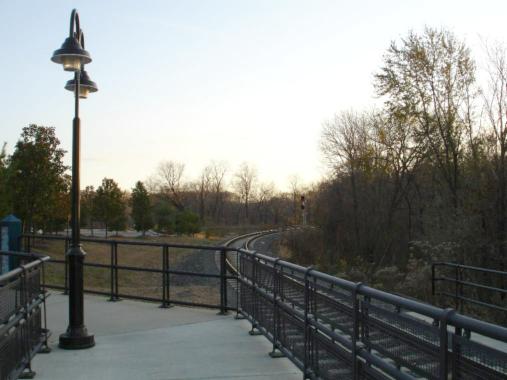
The empty platform at the
brand new, tiny little train station.
Parking there is plentiful
and FREE, can you imagine?
Compared to a six-year wait
for a permit at Princeton Junction...
And it doesn't matter anyhow,
you can walk to the station from the house...
in ten minutes you're in Trenton
and from there you can transfer to NYC or Philly.
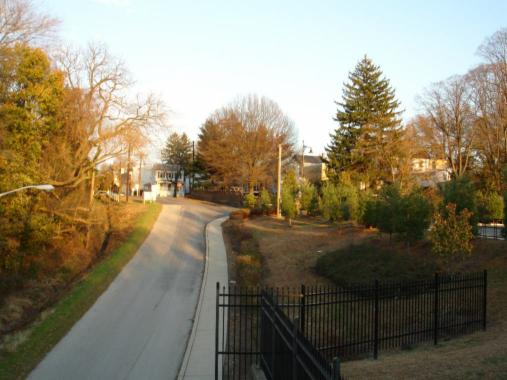
This is taken from the train
platform,
and shows the steep road from
the town down to the river.
You almost need a funiculaire
in this place--
are there any of those in
the US?
I've only been on the
one in Quebec City...
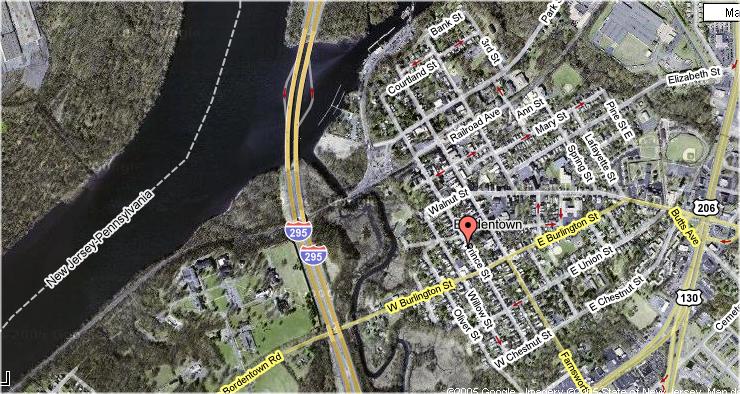
All of Bordentown City, aerial
view
Delaware River at left, Crosswicks
Creek emptying into it from the north.
You can see the marina just
to the left of Courtland Street.
The brand-new River
Line train tracks are right above it.
See more pix of our new house
and street here.
You can read much more about
Bordentown here.
and there's a a cool walking
tour here.
If you're in a rush, check
out this quick
history.
THP
Home





























